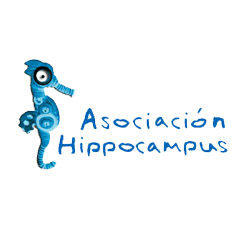Asociación Hippocampus
-
Código
Hippo22 -
Fecha de alta
07/11/2022 - Descarga la ficha
Descripción
La Asociación Hippocampus nace en 2007 por iniciativa de personas voluntarias ligadas a la Red natura 2000 en Murcia. Tiene como base fundamental promocionar y desarrollar iniciativas relacionadas con la protección y defensa de la naturaleza, cuidado del medio ambiente y el desarrollo sostenible. Su principal zona de actuación es el Medio Marino. Sus principales proyectos de acción son Hippocampus, que estudia la estructura poblacional del caballito de mar en el Mar Menor, las causas que han originado su declive y la evaluación de posibilidades de reproducción en cautividad y su posterior reintroducción, ejecutando un plan de recuperación de la especie. y se incluya en al Catálogo Nacional de Especies en peligro de España. En 2017, lanza el Proyecto Plumbum, que intenta minimizar el impacto negativo del plomo proveniente de la pesca recreativa, deportiva y profesional, en el medio marino y residuos provenientes de este sector. Y paralelamente , trabajo con el proyecto de acciones ciudadanas voluntarias donde participa activamente en acciones de ciencia ciudadana en el Medio Marino y litoral con proyectos educativos, charlas en centros educativos, exposiciones, limpiezas selectivas de basura, ferias, talleres de cultura oceánica, seguimiento de la gestión del mar menor, entre otros.
Información general
Objetivos
To define the population structure of the seahorse (Hippocampus guttulatus) at the European level. 2. To increase knowledge of the biology of the species in the Mar Menor area, with the possibility of extending it to other national and international regions. 3. To deepen our knowledge of the causes that have led to its decline. 4. To evaluate the possibilities and effectiveness of reproduction in captivity and possible reintroduction and the implementation of a recovery plan for the species, following the process of inclusion in the National Catalogue of endangered species in Spain. 5. To raise awareness among visitors, inhabitants, and users of the Mar Menor and its area of influence about the declining situation of the species, given the complex and diverse problems in the uses and protection of this area. 6. To encourage volunteering in environmental matters as a channel for citizen participation, through Citizen Science, to learn about and study nature, supporting its conservation, mainly in the marine, coastal and underwater areas. 7. To develop educational activities inside and outside the classroom aimed at young people and other social groups. 8. To collaborate and cooperate with public administrations and private entities in matters related to the protection and defense of nature, care for the environment, and sustainable development. 9. To carry out land stewardship initiatives together with marine and land stewardship agreements and actions. 10. Promote and develop marine culture initiatives (Ocean Literacy) to contribute to the protection of the oceans and their buffer zones, through collaborative projects and actions inspired by nature.
Puntos fuertes
Censos de caballito de mar y Signátidos en el Mar menor y Litoral Mediterráneo adyacente

